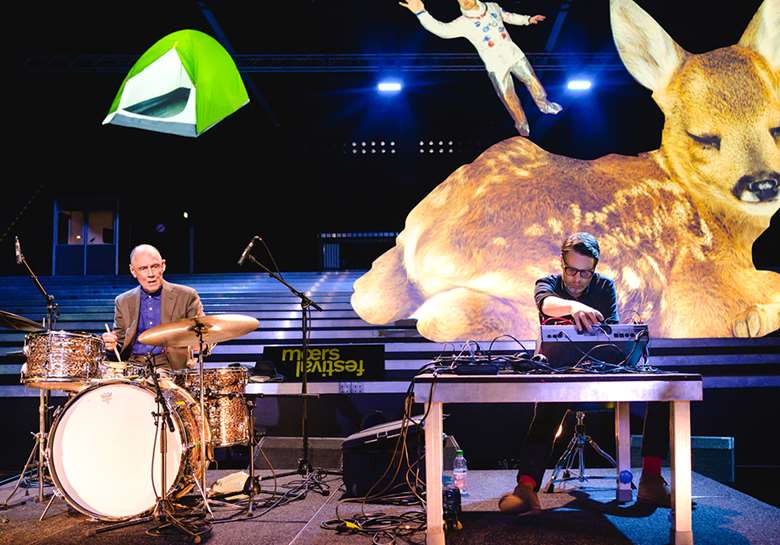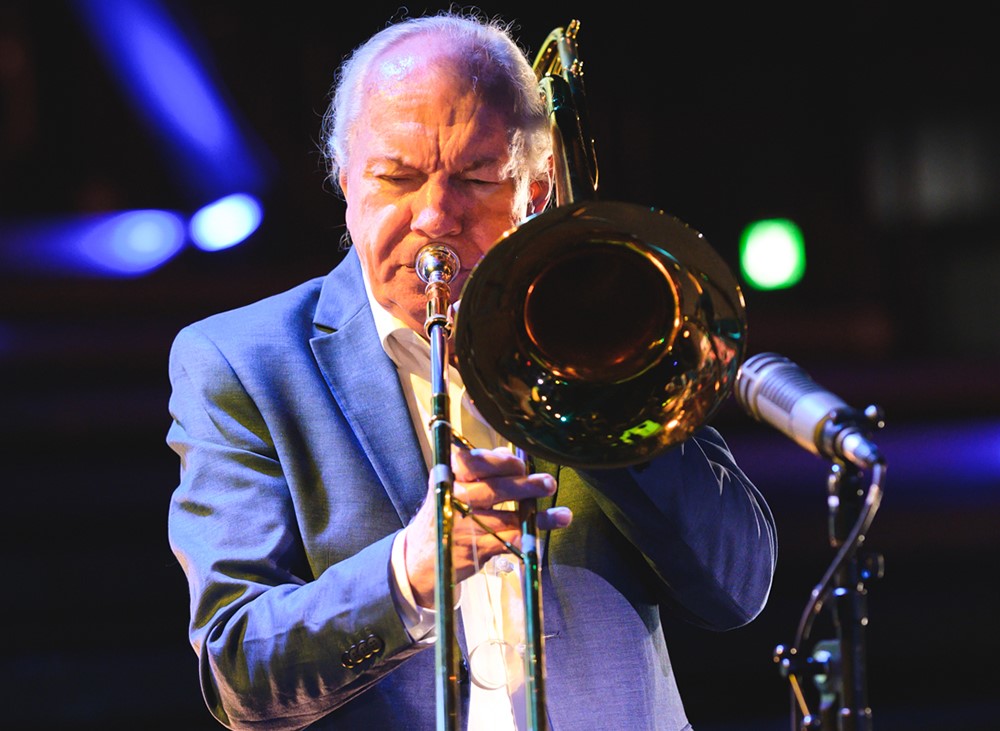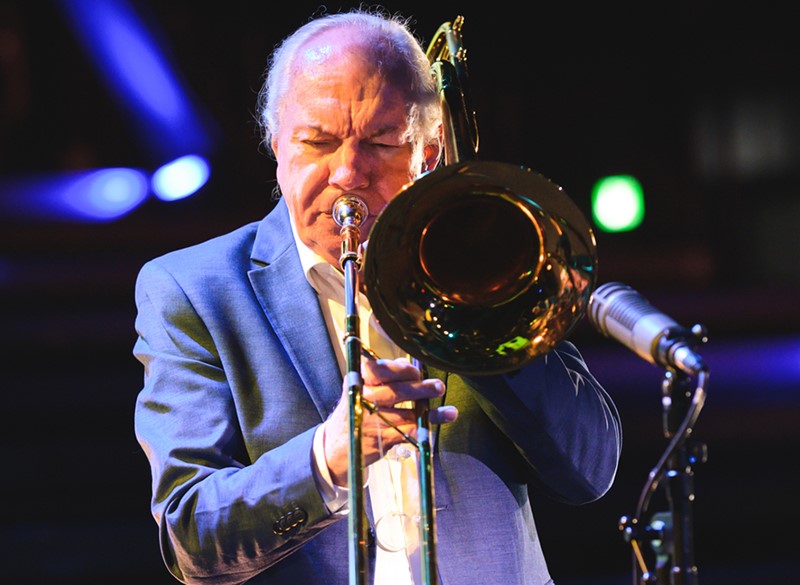Jazz Keeps Moving As Germany’s Moers Festival Goes Big Online
Martin Longley
Monday, June 8, 2020
Confronted with the limitations of lockdown, the Moers Festival in Germany made the uncompromising decision to forge ahead, converting to livestreaming on a massive scale

So while they retained their full four-day programme and broadcast from its main Eventhalle venue, the latter was populated by a skeleton crew and audience. The French-German television network Arte filmed for the stream, as well as for their own transmissions, combining performances and interview footage into a vibrant marathon flow.
Moersfest is surely the most extreme example of a large-scale festival transforming its existence into a livestream. Some festivals have broadcast connected material, or had booked artists beam in from their homes, but Moers have now made the greatest leap so far. On the same Whitsun weekend, the Brussels Jazz Weekend manifested itself as a two-dayer at the Flagey venue, and on a club scale, Smalls in NYC is now hosting several streaming bands each week in its currently empty basement.
Your Jazzwise scribe was smuggled into the Moersfest house, masked and disinfected, his pencil as sterile as a virgin whistle. Wine was imbibed through a straw, directional arrows were followed, and seating was dotted around the voluminous hall with strategic spacing-placement. This, dear reader, is the shape of gigs to come, when audiences are eventually invited back indoors.
An intensity of atmosphere accumulated over four days, perhaps as performers and audience settled into these new ways, and eventually relaxed (or tensed) into full expression. Sampled applause from the almost five decades’ history of the festival, became an almost subversive element, frequently interrupting sensitive improvisations, imposing sudden endings or shattering atmospheres, but also weaving or slipping into the bodies of louder acts, providing hysteria and humour. There were vintage claps captured by Achim Zepezauer and Wolfgang van Ackeren, from sets by Anthony Braxton, Talibam!, and David Moss, among many more.
The silver-suited performance artist Miss Unimoers lent a significant presence, steadily evolving through characters and scenarios, from absurdist playfulness to absurdist doom-scenarios, as the festival progressed. His antics were live, spread and collaged around multiple screens, which were cut in the shape of a flying saucer, a sofa, a tent, an astronaut and a baby antelope. A typically worrying example was when Unimoers began flaying the gently pulsing fur of said antelope.
Curiously, most of the weekend’s truly outstanding sets sprang from cross-generational collaborations, elder statesmen being joined by much younger players.
Swedish drummer Sven-Åke Johansson (77) and German electronicist Jan Jelinek met on an autobahn of free pulse, the latter layering multiple waves of texture with his small mound of table-gear, the former behaving like a subtle big band boomer, splashing around his golden kit. They made an extended bass throb trundle, train-track stack-blowing, overnight hurtle, lights stuttering through speeding windows, with an immediate tension of excitement and purpose.
Trombonist Conny Bauer (76, below) is one of Germany’s most revered players, here found in another duo with Norwegian drummer Dag Magnus Narvesen. The pair’s roles of freedom and structure alternated, as each took a more abstract solo, while the other maintained momentum.


Gunter Hampel (82) is a veteran of free improvisation, here fronting his Music & Dance Improvisation Company, switching between vibraphone and bass clarinet. The line-up also included drums, tenor saxophone (or electronics) and a singer, grafting avant garde and old school swing with equality, as the dancers invaded the green screen space of Miss Unimoers, projecting their uncaged moves around the various screens.
The Mayfield is a new band led by pianist Heiner Goebbels (67), with an unusual line-up of ondes martenot, electric guitar and massive percussion. This was ideal for shifting between spectral minimalism and chunky hardass metal eruption, with young French percussionist Camille Émaille’s kit bolstered by kettle drum, large gong and huge bass drum, primed for detonation. She was the highly impressive new discovery of the weekend. It's been three decades since Goebbels played at the Moersfest, and he certainly made a savagely controlled sonic scar on the proceedings this time around.
Meanwhile, the alto saxophonist Jan Klare also made a mark throughout the festival, firstly leading The Dorf, his texture-painting big band, then organising the daily Moers Sessions, where various permutations of players combined from across different bands. Always of interest, and often gripping in their spontaneous improvisatory relationships.
The Arte programmes are available to stream until 28 June, and the Youtube footage will be around forevermore www.arte.tv/de/videos/RC-016169/moers-festival/
Photographs: André Symann